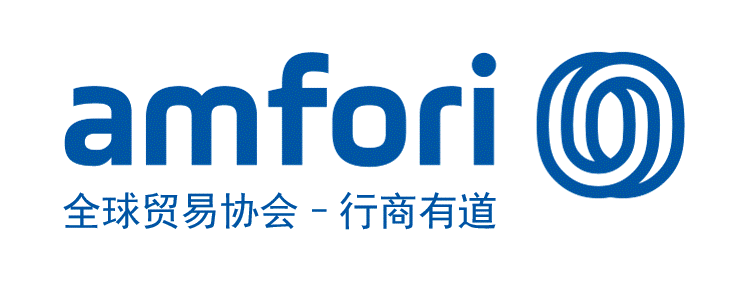Home > Best Practices > Best Practices List >
Linsen Logistics Group: Developing energy-saving and high-efficient transportation with dumping trailers through the internet of things
2015-10-30Sino-Swedish Corporate Socialadmin0010
Company Profile
Linsen Logistics Group (hereinafter referred to as Linsen Logistics) formerly known as Nantong Transportation and Logistics Group, was founded in 1951. At present, it provides the transportation, warehousing and delivery of general cargos, hazardous chemicals and large wind-power parts. The group has become a large integrated logistics enterprise with a registered capital of 74.93458 million yuan, the total assets of nearly 500 million yuan, a fleet of more than 1,400 vehicles and nearly 100 thousand square meters of owned and leased warehouses. It has set up more than 40 subsidiaries and 60 branches in other cities, serving over 300 clients.
Challenge
High energy consumption and serious environmental pollution are major problems facing China's logistics industry. The development of transportation with dumping trailers, to some extent, provides solution to this problem. However the poor infrastructure and the complicated transporting process has made it hard to carry out. In the country’s efforts to implement Scientific Outlook on Development and build a resource-saving and environmently-friendly society, the transportation with dumping trailers has been a key approach to better energy conservation. This new transport model has also been an effective way to develop logistics enterprises.
Solution
The transportation with dumping trailers means the trailers can be coupled and uncoupled easily at station yards as scheduled, and the tractor can haul another trailer without disturbing the cargo. As one of first enterprises to pilot this new transport model, Linsen Logistics has started its exploration in its transport route from Shanghai to Nantong since 2008.
Arrangement of vehicles
Linsen Logistics has invested 132 tractors and 268 trailers in its 20 transport routes. This has brought the ratio of semi-trailer swap transport to 1:2.05.
Information technology
In 2012, Linsen Logistics updated its logistics information management system. In the same year, it also built a GPS vehicle monitoring and dispatching system and a 3G video monitoring system. The company has realized real-time monitoring and management of vehicles and drivers during transportation.
In the past two years, the company integrated the above-mentioned three systems. First of all, it applied GPS vehicle monitoring and dispatching system and 3G video monitoring system to more vehicles and station yards; secondly, it updated the system and improved intelligent terminal system for semi-trailer trucks to realize real-time dispatch and management, the management of tractors and trailers, the dynamic monitoring of load capacity, the management of energy consumption, the guarantee to safe driving, the analysis of on-line fault and the audio and video monitoring. More noticeably, the company installed handheld terminal dispatching system at station yards, composed of PDA handheld terminal logistics system and mobile printing terminal system. The dispatching system provides a guarantee to the information transfer and the communication between staff with their functions like on-site scheduling, electronic transfers, job tracking, information gathering, and electronic waybill.
After its integration and improvement of existing systems, the company has eventually formed an intelligent operation and management system with the organic combination of people, vehicle, goods, and station yards, which forms a group of functions including transport management, storage and delivery, market management, supply management, customer service and digital surveillance of single-vehicle fuel consumption.
Building an alliance for transportation with dumping trailers through Sumeng Logistics
Sumeng Logistics is an alliance comprised of four member companies. Through this platform, the group can bring their advantages to the greatest play. It integrates their resources such as freight yards, vehicles, clients, supply of goods, information and talents and improves the internal logistics system. After the successful operation of semi-trailer swap transport model in Nanjing, Suzhou, Nantong and Wuxi, the group will gradually spread this model all over China. In this way, the logistics companies can share and integrate their station yards and transport capacity to avoid repeated investment and construction. More importantly, they can give full play to their social responsibility of “socialized public station yard” and enhance the efficiency of their resources.
Promoting network-based semi-trailer swap transportation on the existing base
Relying on its edges in transport network and supply of cargo, the Group has adopted semi-trailer swap transport model in its existing 20 routes. On this basis, it will integrate its station yards, transport routes, vehicles and other resources by means of information technology to gradually develop this model from special transport line to cross-region transport. In the meanwhile, it will move towards network-based semi-trailer swap transportation with the stable customer resources of four member companies.
Achievements
The transportation with dumping trailers can effectively reduce the average energy consumption of transport, which is not reflected in the single vehicle, but in the whole fleet, because the centralized management model can reduce their deadhead running, bringing lower energy consumption of unit turnover. According to statistics in 2013, the fuel consumption of a single vehicle in the swap transport was 33 liter per hundred kilometers and 1.3 liter per kilometers for a hundred tons of goods. In comparison with the traditional transport model, this project reduced the fuel consumption by 0.3 liter per kilometers for a hundred tons of goods. If a vehicle carries 6.7 million tons of goods per kilometer each year, it can lead to annual savings of 9,832 liters of fuel. In this way, 132 tractors invested and operated by Linsen Logistics can save 1.2978 million liters of fuel each year, equivalent to 1,116.11 tons of diesel and 1,626.28 tons of standard coal, reducing CO2 emission by 3,530 tons.
The use of the internet of things in the transportation with dumping trailers has enabled the real-time monitoring of fuel consumption and provided a more complete security to safe driving and timely on-line analysis of vehicle breakdowns. The dynamic monitoring of load capacity can effectively help reduce a number of bad driving habits and behavior, enhance driving safety and fuel efficiency. Through the analysis of vehicle fault code, the company can timely make vehicle maintenance to reduce exhaust emission.
The transportation with dumping trailers has not only greatly reduced the acquisition cost of tractors, but also improves the actual load rate of vehicles. In accordance with the analysis of transportation with dumping trailers, its average cost is 0.26 yuan per kilometer for one ton of goods, 16% lower than that of traditional transport (0.31 per kilometer for one ton of goods). In 2013, the company achieved operating income of 152,000 yuan through this means of transportation.
Prospect
At present, Linsen Logistics is building logistic station center, covering an area of 74.72 acres, with the total planned construction area of 302,386 square meters and a total investment of 622.9 million yuan. The center will be built in three phases, including public parking lot, areas for transportation with dumping trailers, distribution service area, LTL operation area and integrated office area. The company has also made a vehicle purchase plan for the coming 4 years.
Linsen Logistics Group (hereinafter referred to as Linsen Logistics) formerly known as Nantong Transportation and Logistics Group, was founded in 1951. At present, it provides the transportation, warehousing and delivery of general cargos, hazardous chemicals and large wind-power parts. The group has become a large integrated logistics enterprise with a registered capital of 74.93458 million yuan, the total assets of nearly 500 million yuan, a fleet of more than 1,400 vehicles and nearly 100 thousand square meters of owned and leased warehouses. It has set up more than 40 subsidiaries and 60 branches in other cities, serving over 300 clients.
Challenge
High energy consumption and serious environmental pollution are major problems facing China's logistics industry. The development of transportation with dumping trailers, to some extent, provides solution to this problem. However the poor infrastructure and the complicated transporting process has made it hard to carry out. In the country’s efforts to implement Scientific Outlook on Development and build a resource-saving and environmently-friendly society, the transportation with dumping trailers has been a key approach to better energy conservation. This new transport model has also been an effective way to develop logistics enterprises.
Solution
The transportation with dumping trailers means the trailers can be coupled and uncoupled easily at station yards as scheduled, and the tractor can haul another trailer without disturbing the cargo. As one of first enterprises to pilot this new transport model, Linsen Logistics has started its exploration in its transport route from Shanghai to Nantong since 2008.
Arrangement of vehicles
Linsen Logistics has invested 132 tractors and 268 trailers in its 20 transport routes. This has brought the ratio of semi-trailer swap transport to 1:2.05.
Information technology
In 2012, Linsen Logistics updated its logistics information management system. In the same year, it also built a GPS vehicle monitoring and dispatching system and a 3G video monitoring system. The company has realized real-time monitoring and management of vehicles and drivers during transportation.
In the past two years, the company integrated the above-mentioned three systems. First of all, it applied GPS vehicle monitoring and dispatching system and 3G video monitoring system to more vehicles and station yards; secondly, it updated the system and improved intelligent terminal system for semi-trailer trucks to realize real-time dispatch and management, the management of tractors and trailers, the dynamic monitoring of load capacity, the management of energy consumption, the guarantee to safe driving, the analysis of on-line fault and the audio and video monitoring. More noticeably, the company installed handheld terminal dispatching system at station yards, composed of PDA handheld terminal logistics system and mobile printing terminal system. The dispatching system provides a guarantee to the information transfer and the communication between staff with their functions like on-site scheduling, electronic transfers, job tracking, information gathering, and electronic waybill.
After its integration and improvement of existing systems, the company has eventually formed an intelligent operation and management system with the organic combination of people, vehicle, goods, and station yards, which forms a group of functions including transport management, storage and delivery, market management, supply management, customer service and digital surveillance of single-vehicle fuel consumption.
Building an alliance for transportation with dumping trailers through Sumeng Logistics
Sumeng Logistics is an alliance comprised of four member companies. Through this platform, the group can bring their advantages to the greatest play. It integrates their resources such as freight yards, vehicles, clients, supply of goods, information and talents and improves the internal logistics system. After the successful operation of semi-trailer swap transport model in Nanjing, Suzhou, Nantong and Wuxi, the group will gradually spread this model all over China. In this way, the logistics companies can share and integrate their station yards and transport capacity to avoid repeated investment and construction. More importantly, they can give full play to their social responsibility of “socialized public station yard” and enhance the efficiency of their resources.
Promoting network-based semi-trailer swap transportation on the existing base
Relying on its edges in transport network and supply of cargo, the Group has adopted semi-trailer swap transport model in its existing 20 routes. On this basis, it will integrate its station yards, transport routes, vehicles and other resources by means of information technology to gradually develop this model from special transport line to cross-region transport. In the meanwhile, it will move towards network-based semi-trailer swap transportation with the stable customer resources of four member companies.
Achievements
The transportation with dumping trailers can effectively reduce the average energy consumption of transport, which is not reflected in the single vehicle, but in the whole fleet, because the centralized management model can reduce their deadhead running, bringing lower energy consumption of unit turnover. According to statistics in 2013, the fuel consumption of a single vehicle in the swap transport was 33 liter per hundred kilometers and 1.3 liter per kilometers for a hundred tons of goods. In comparison with the traditional transport model, this project reduced the fuel consumption by 0.3 liter per kilometers for a hundred tons of goods. If a vehicle carries 6.7 million tons of goods per kilometer each year, it can lead to annual savings of 9,832 liters of fuel. In this way, 132 tractors invested and operated by Linsen Logistics can save 1.2978 million liters of fuel each year, equivalent to 1,116.11 tons of diesel and 1,626.28 tons of standard coal, reducing CO2 emission by 3,530 tons.
The use of the internet of things in the transportation with dumping trailers has enabled the real-time monitoring of fuel consumption and provided a more complete security to safe driving and timely on-line analysis of vehicle breakdowns. The dynamic monitoring of load capacity can effectively help reduce a number of bad driving habits and behavior, enhance driving safety and fuel efficiency. Through the analysis of vehicle fault code, the company can timely make vehicle maintenance to reduce exhaust emission.
The transportation with dumping trailers has not only greatly reduced the acquisition cost of tractors, but also improves the actual load rate of vehicles. In accordance with the analysis of transportation with dumping trailers, its average cost is 0.26 yuan per kilometer for one ton of goods, 16% lower than that of traditional transport (0.31 per kilometer for one ton of goods). In 2013, the company achieved operating income of 152,000 yuan through this means of transportation.
Prospect
At present, Linsen Logistics is building logistic station center, covering an area of 74.72 acres, with the total planned construction area of 302,386 square meters and a total investment of 622.9 million yuan. The center will be built in three phases, including public parking lot, areas for transportation with dumping trailers, distribution service area, LTL operation area and integrated office area. The company has also made a vehicle purchase plan for the coming 4 years.
Best Practices
- The 100-year brand — Air Liquide also has a sense of juvenile
- Beijing Public Transportation Corporation: Developing green transportation to build a harmonious and livable capital
- CGN: Building a modern factory in barren deserts and developing a new win-win cooperation model along “Belt and Road”
Upcoming Event

All the materials on the site “Source: XXX (not from this site)” have been reprinted from other media. They do not imply the agreement by the site.
All the materials with “Source: CSR-China Website” are the copyright of CSR-China Website. None of them may be used in any form or by any means without permission from CSR-China Website.
GoldenBee Official WeChat
Copyright © Csr-china.net All Right Reserved.
京ICP备19010813号










